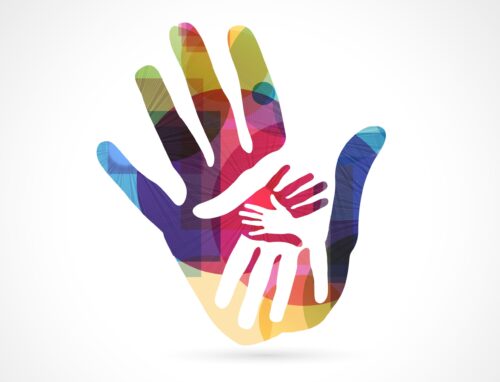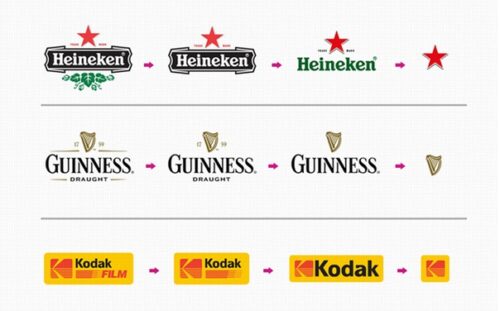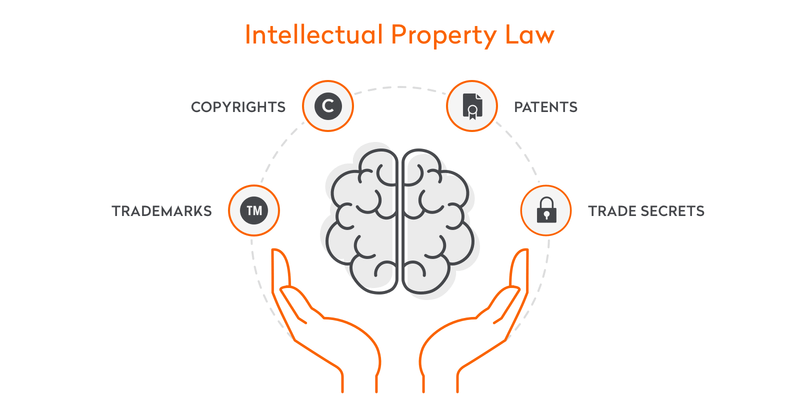A logo is not just a colorful picture or a stylish font; it is the face of the brand, its visual identity that reflects its values, culture, and mission. A good logo helps a brand stand out from the competition and secure its unique niche in the consumer’s mind.
The importance of a memorable logo cannot be overstated. It is one of the key tools of visual communication with the target audience and plays a crucial role in shaping the first impression of the brand. A memorable logo enhances brand recognition, creates a positive image, and contributes to attracting new customers.
But what makes a logo genuinely memorable? Let’s explore the fundamental elements that contribute to its recognizability and effectiveness.
Uniqueness and Originality
In a world saturated with brands and logos, standing out from the crowd is paramount. A unique and original logo can set a brand apart from its competitors and leave a lasting impression on consumers. It speaks volumes about the brand’s creativity and willingness to innovate, which can attract more customers and build a stronger brand identity.
Importance of Differentiation
Differentiating your brand from competitors is essential in today’s competitive market. A unique logo can help achieve this by capturing the essence of the brand and conveying its unique selling proposition (USP) visually.
Examples of Unique and Memorable Logos
Consider Apple’s iconic bitten apple logo or Nike’s swoosh. These logos are simple yet distinctive, immediately recognizable, and strongly associated with the brand. They embody the brand’s values and message in a way that is unique to them, contributing significantly to their global recognition and success.
By prioritizing uniqueness and originality in logo design, brands can create a lasting impact on their audience and carve out a distinctive identity that sets them apart from the competition.
Simplicity and Readability
A logo should be easy to understand and recognize, no matter where it’s seen – on a product, a billboard, or a social media post. Simplicity and readability are key to achieving this.
The Importance of Simplicity
A simple design ensures that the logo is versatile and can be easily adapted to various mediums and sizes. It also makes it more memorable, as people tend to remember simple shapes and colors better than complex designs.
Examples of Simple and Effective Logos
Think of logos like McDonald’s golden arches or the Apple logo. Their simple shapes and minimalistic design make them easy to recognize and remember. They also communicate the brand’s message effectively without the need for any additional elements.
Simplicity in logo design doesn’t mean boring or basic; it means creating a design that is clear, concise, and impactful. A simple logo can be just as powerful and effective as a more complex one, if not more so.
Color Palette
The colors used in a logo can have a profound impact on how it is perceived by the audience. Different colors evoke different emotions and can convey the brand’s message more effectively.
The Role of Color in Brand Perception
Colors can trigger emotional responses and create associations in the minds of consumers. For example, red is often associated with passion, energy, and excitement, while blue is seen as calm, trustworthy, and professional. Choosing the right color palette can help communicate the brand’s values and personality.
Examples of Effective Use of Color in Logos
Coca-Cola’s red and white color scheme is a classic example of effective use of color in a logo. The red color conveys energy and passion, while the white adds a touch of purity and simplicity. Similarly, IBM’s blue logo communicates trust, reliability, and professionalism, reflecting the company’s values and ethos.
Choosing the right color palette is crucial to creating a memorable and effective logo. It can help the brand stand out from the competition, communicate its message more effectively, and create a strong emotional connection with the audience.
Symbolism and Associations
The symbols and shapes used in a logo can greatly influence how it is perceived by the audience. Symbolism can add depth to the design and create strong associations with the brand’s message and values.
The Impact of Symbols and Shapes
Symbols and shapes can communicate complex ideas and messages in a simple and visually appealing way. They can represent the brand’s history, values, or vision and create a strong emotional connection with the audience.
Examples of Logos with Strong Symbolism
The Nike Swoosh is a prime example of a logo that uses symbolism effectively. The Swoosh represents motion and speed, reflecting the brand’s focus on athletic performance. Similarly, the Apple logo with its bitten apple represents knowledge and innovation, aligning with the company’s focus on creating innovative products.
When used effectively, symbols and shapes can add depth and meaning to a logo, making it more memorable and impactful. They can help the audience understand the brand’s message and values at a glance, creating a strong and lasting impression.
Target Audience Perception
Understanding and catering to the preferences and expectations of your target audience is crucial when designing a logo. The logo should resonate with the audience and reflect their values and aspirations.
The Importance of Audience Research
Before designing a logo, it is important to conduct thorough research to understand the demographics, preferences, and values of your target audience. This information can then be used to create a logo that appeals to them and meets their expectations.
Examples of Audience-Centric Logos
A great example of an audience-centric logo is the Lego logo. The bright colors and playful font reflect the brand’s focus on children and creativity. Similarly, the Harley-Davidson logo with its bold font and dark colors appeals to its target audience of motorcycle enthusiasts, reflecting their rugged and free-spirited nature.
By prioritizing the preferences and values of the target audience, brands can create a logo that resonates with them and helps build a strong and loyal customer base. The logo becomes a symbol that the audience can identify with and feel proud to support.
Consistency and Adaptability
A logo should be consistent across all platforms and adaptable to various mediums to maintain brand integrity and ensure recognizability.
The Importance of Consistency
Consistency in logo design helps to build a cohesive brand image and increase brand recognition. It ensures that the logo is immediately recognizable, regardless of where it is seen, and reinforces the brand’s message and values.
The Need for Adaptability
Adaptability is essential to ensure that the logo is effective across different mediums, whether it’s on a business card, a website, or a billboard. A good logo should be versatile enough to be scaled up or down without losing its impact and should work well in black and white as well as color.
Examples of Consistent and Adaptable Logos
The Apple logo is an excellent example of a consistent and adaptable logo. The simple design and monochromatic color scheme ensure that it is recognizable and impactful, regardless of the medium or size. Similarly, the Nike Swoosh is highly adaptable and can be easily incorporated into various mediums and marketing materials.
By prioritizing consistency and adaptability, brands can create a logo that not only stands the test of time but also effectively communicates the brand’s message across various platforms and mediums.
Storytelling and Emotional Connection
A truly memorable logo is not just a visual representation of a brand, but also a storytelling tool that can create a strong emotional connection with the audience.
The Power of Storytelling
Storytelling can add depth and meaning to a logo, transforming it from a simple graphic into a symbol that represents the brand’s history, values, and vision. A good story can create a strong emotional connection with the audience, making the logo more memorable and impactful.
Examples of Logos with Strong Storytelling
Consider the Starbucks logo, which features a siren from Greek mythology. The siren represents the brand’s connection to the sea and its roots in Seattle, a city known for its strong maritime history. This story adds depth and meaning to the logo, creating a strong emotional connection with the audience.
By incorporating storytelling into their logo design, brands can create a memorable and impactful visual identity that resonates with the audience and stands the test of time. The logo becomes more than just a graphic; it becomes a symbol that represents the brand’s story and values, creating a stronger and more meaningful connection with the audience.
Legal Aspects and Intellectual Property
When designing a logo, it’s crucial to consider the legal aspects and protect your brand’s intellectual property. A unique and original logo can be a valuable asset for a business, and it’s important to ensure that it’s legally protected.
Understanding Copyright and Trademark Laws
Copyright and trademark laws are in place to protect the intellectual property of individuals and businesses. Before finalizing a logo, it’s important to conduct a thorough search to ensure that the design is not similar to any existing logos. This can prevent potential legal disputes in the future.
The Process of Trademarking a Logo
Once the logo design is finalized, consider registering it as a trademark. This provides legal protection for the logo and ensures that it cannot be used by other businesses. The process of trademarking a logo can vary by country, so it’s recommended to consult with a legal professional to understand the specific requirements and steps involved.
Examples of Logos with Legal Protection
Many famous logos, such as the McDonald’s Golden Arches and the Nike Swoosh, are trademarked and legally protected. This ensures that these logos are exclusively associated with their respective brands and cannot be used by other businesses without permission.
By understanding the legal aspects and taking the necessary steps to protect your logo, you can ensure that it remains a valuable asset for your brand and continues to effectively represent your business for years to come.











